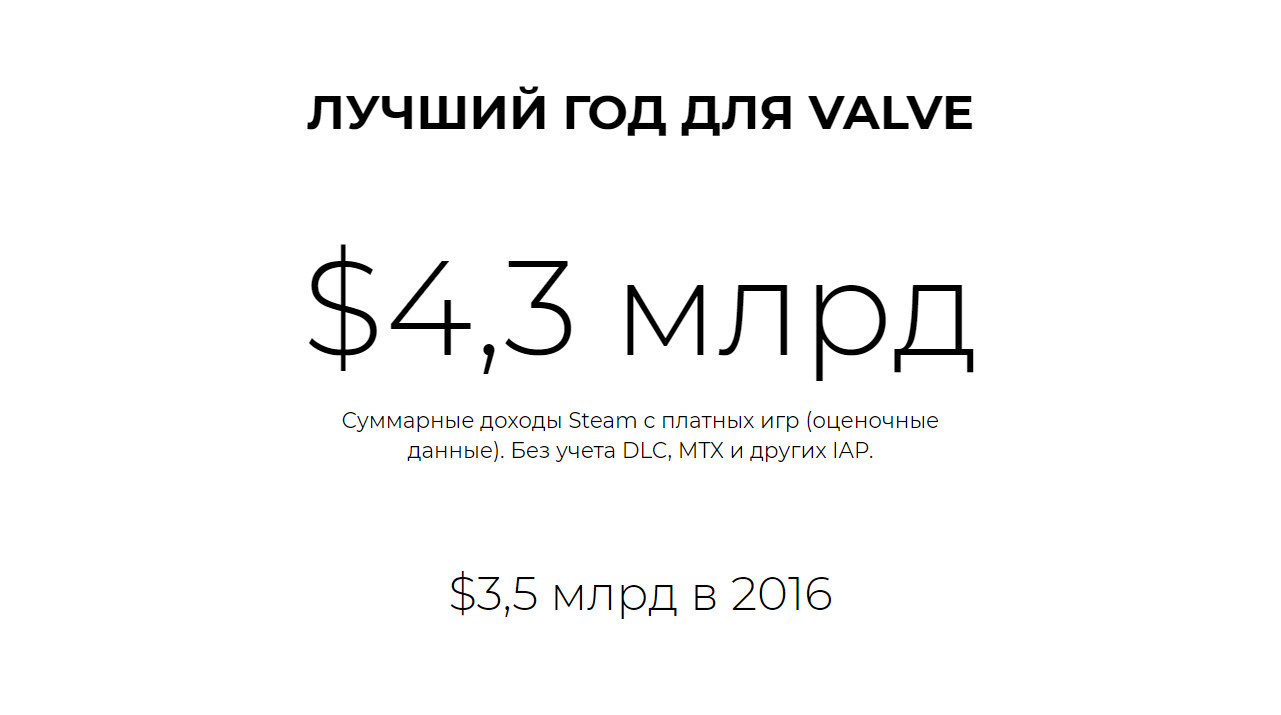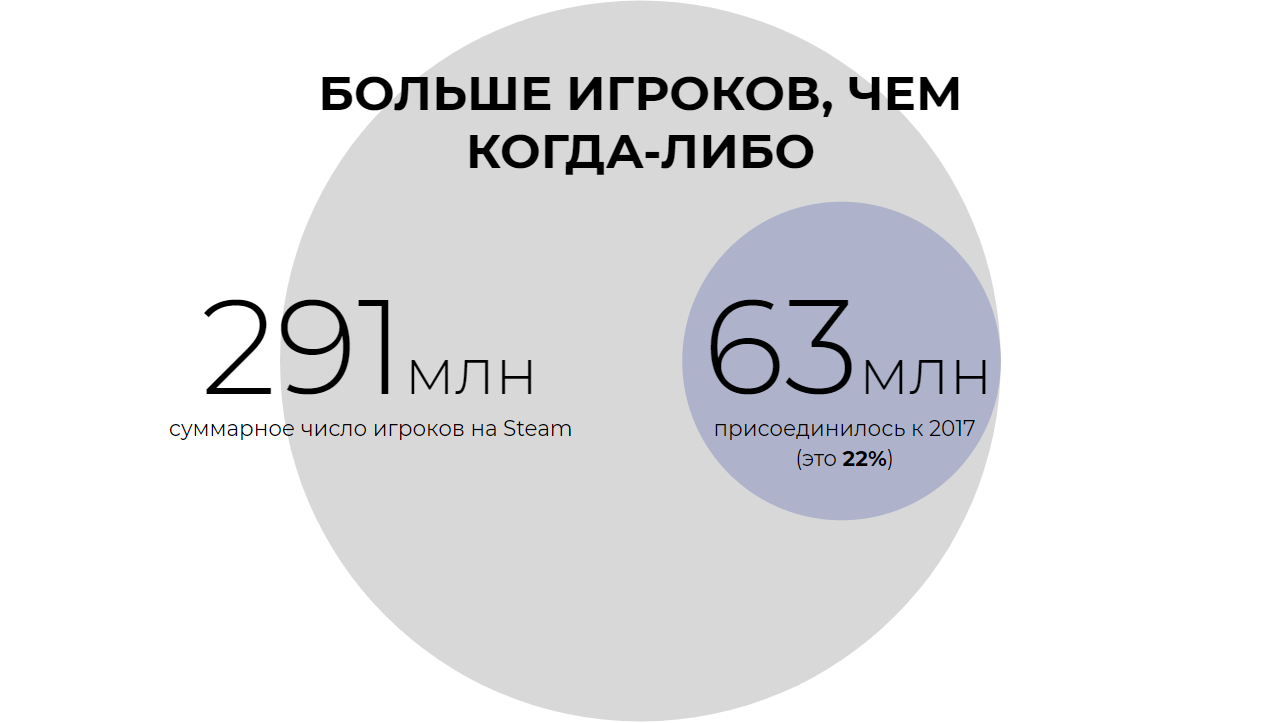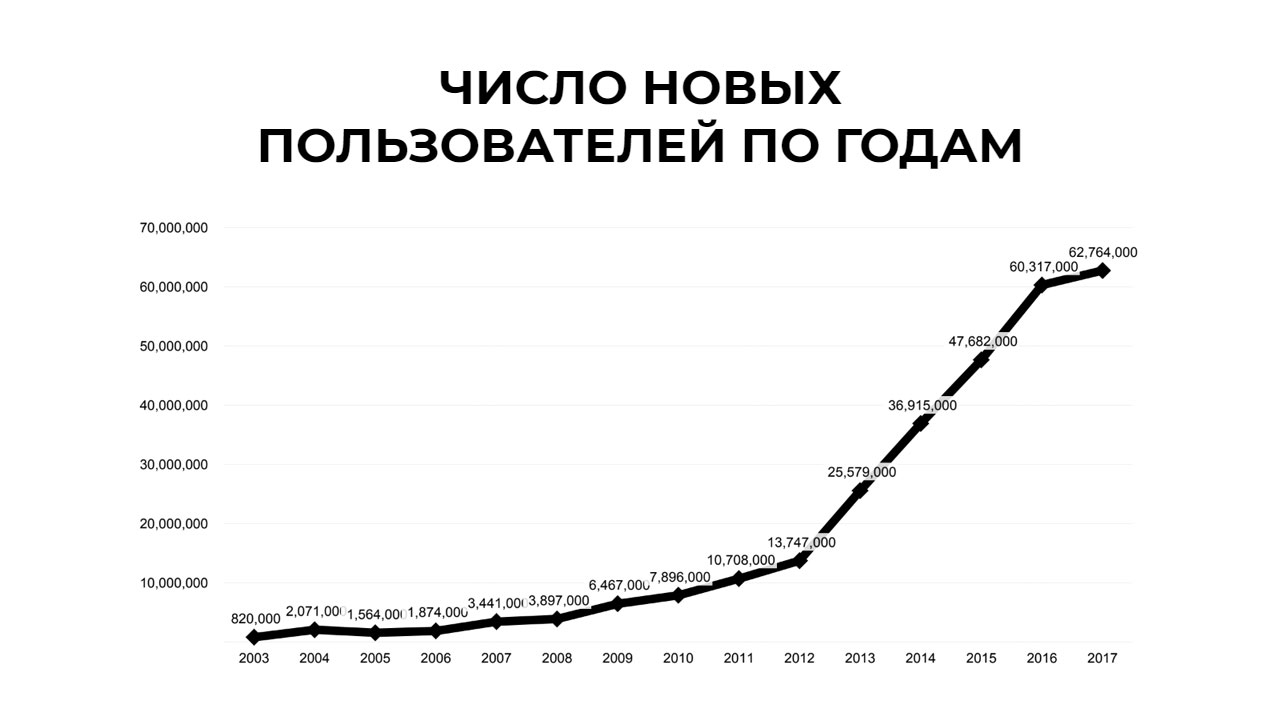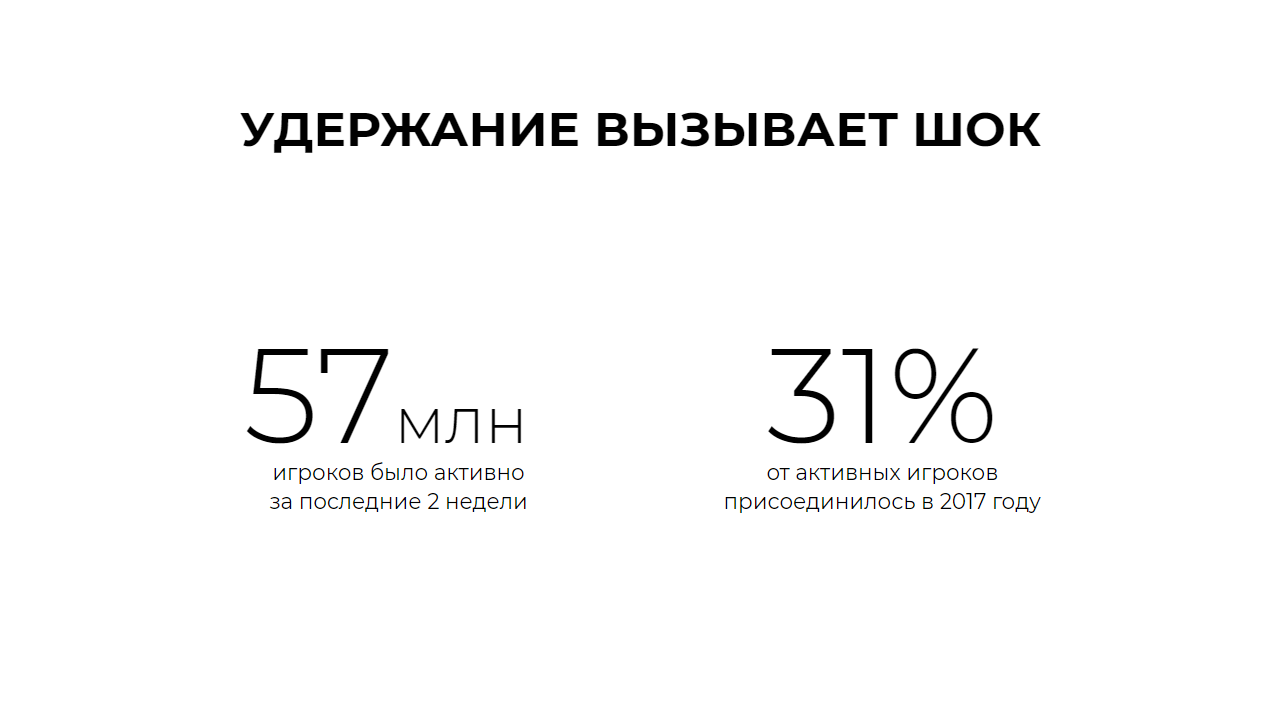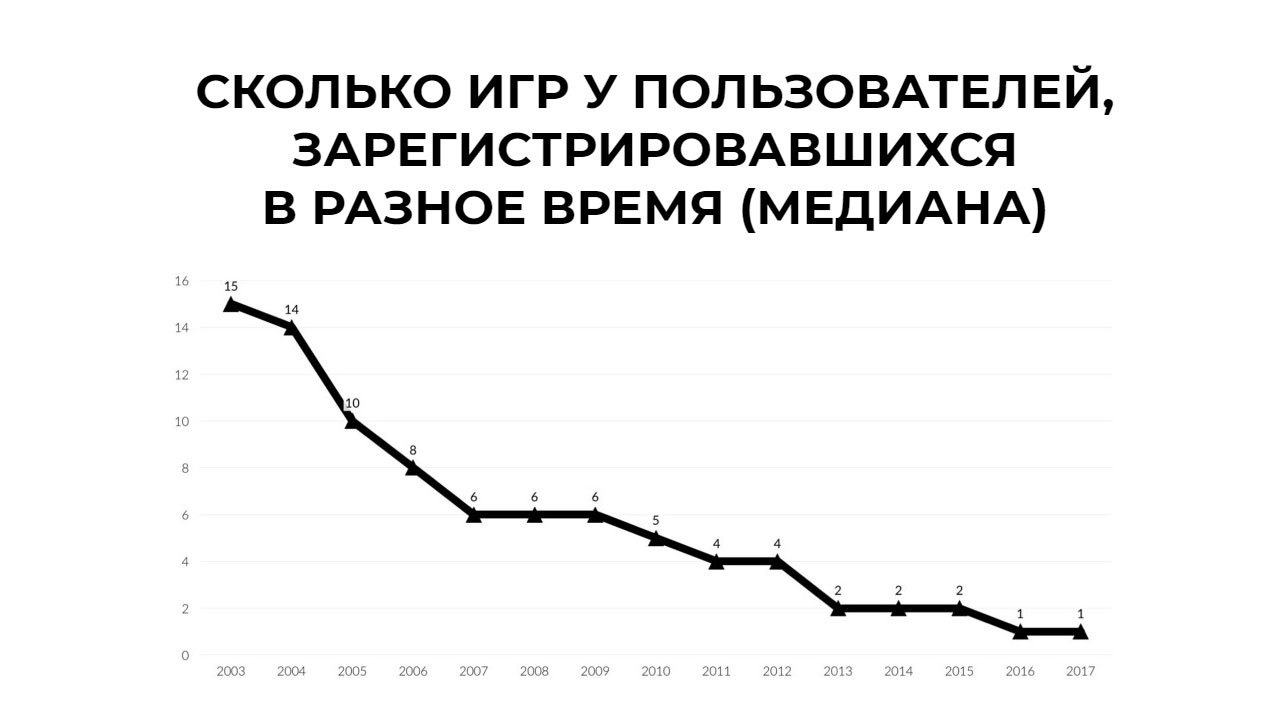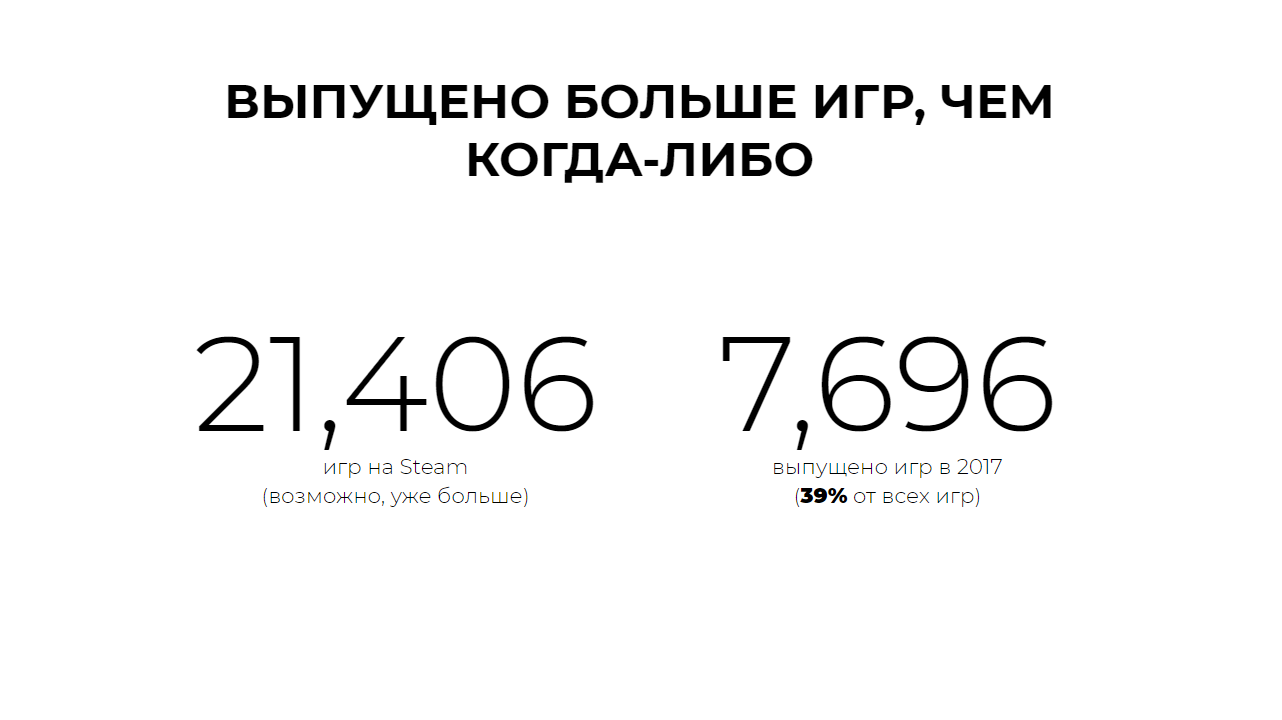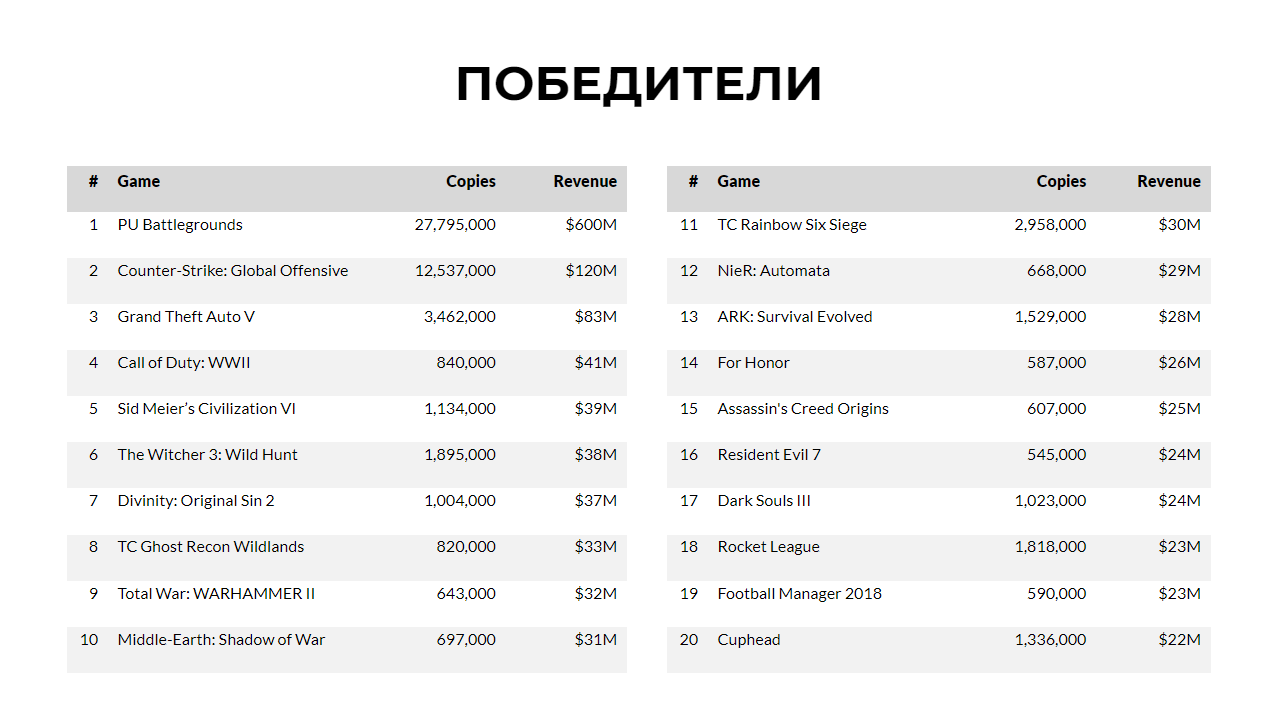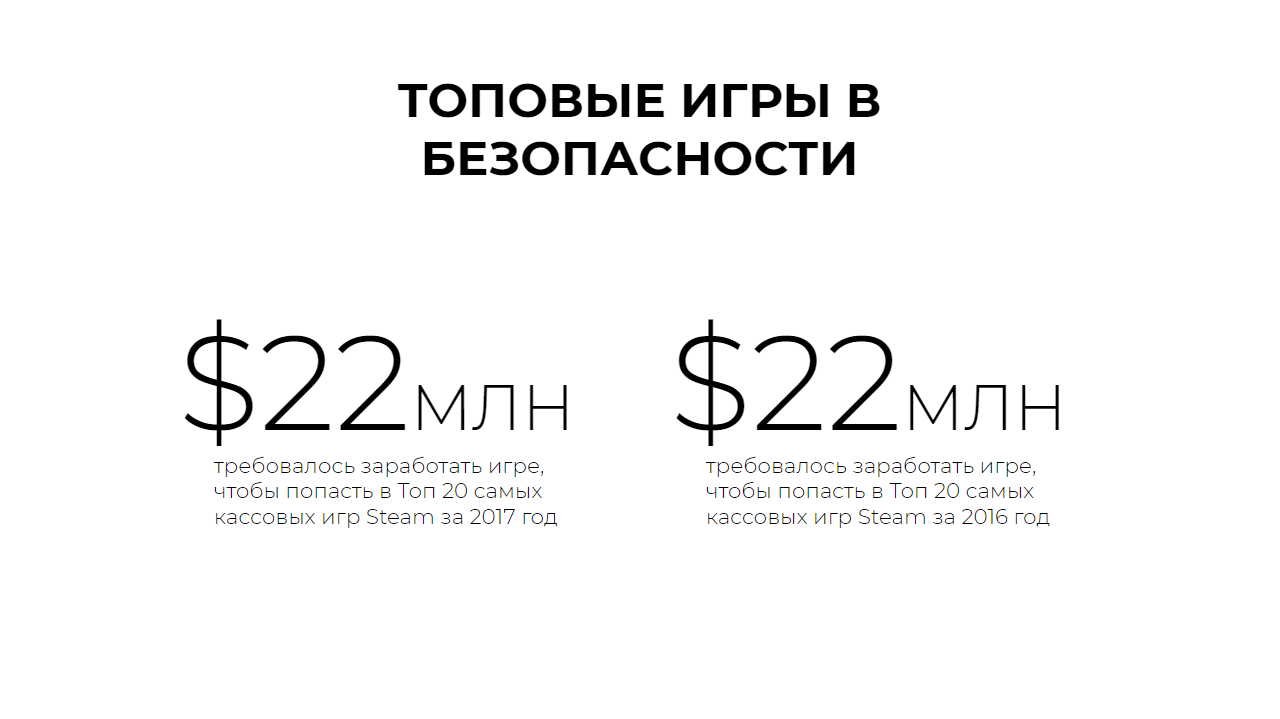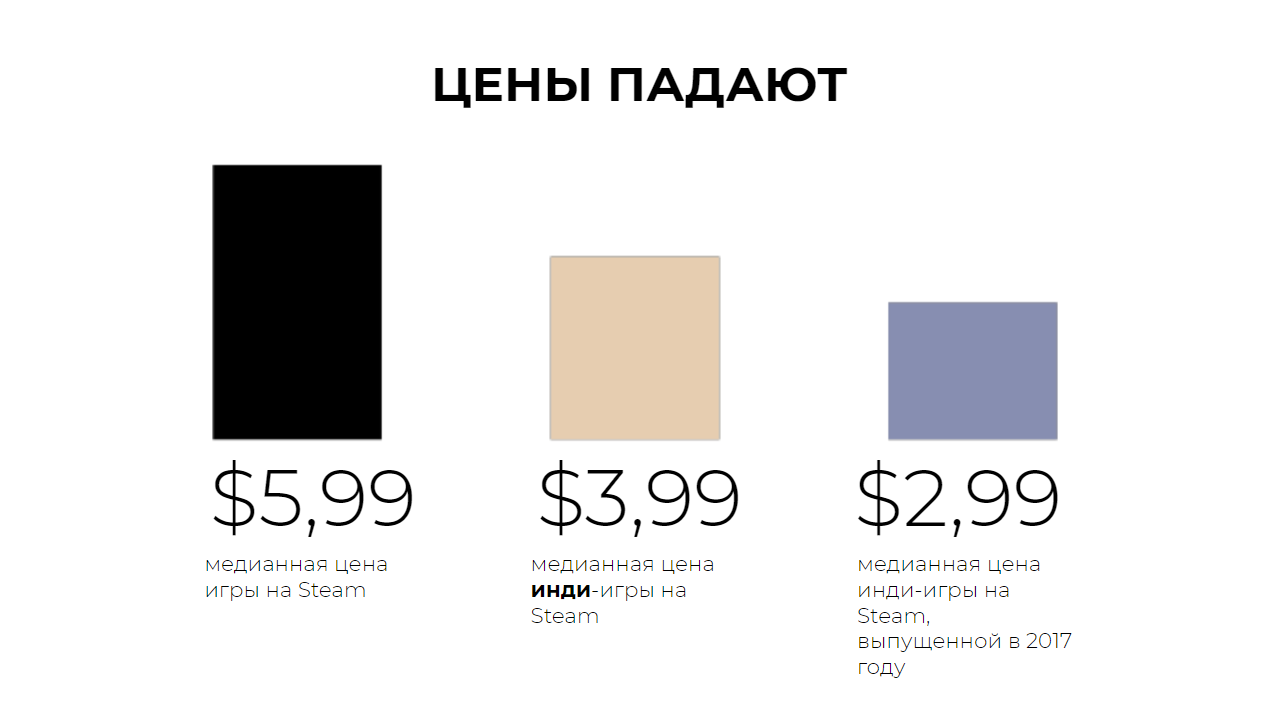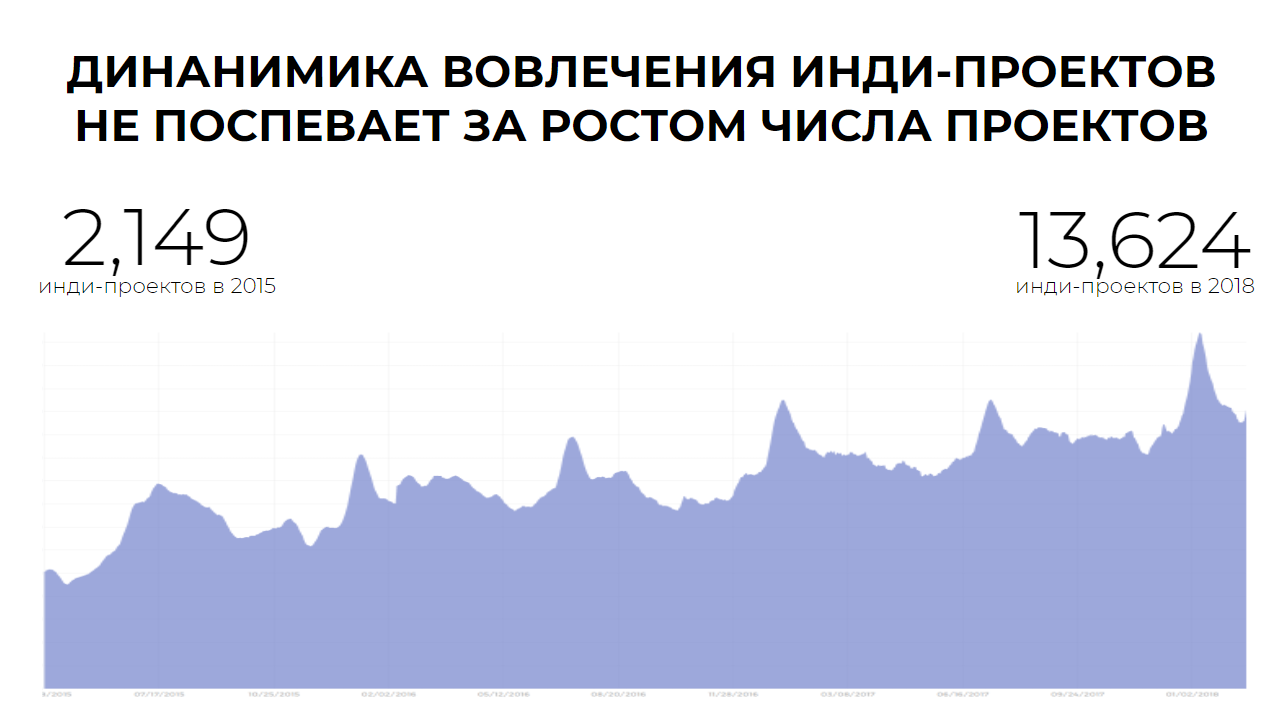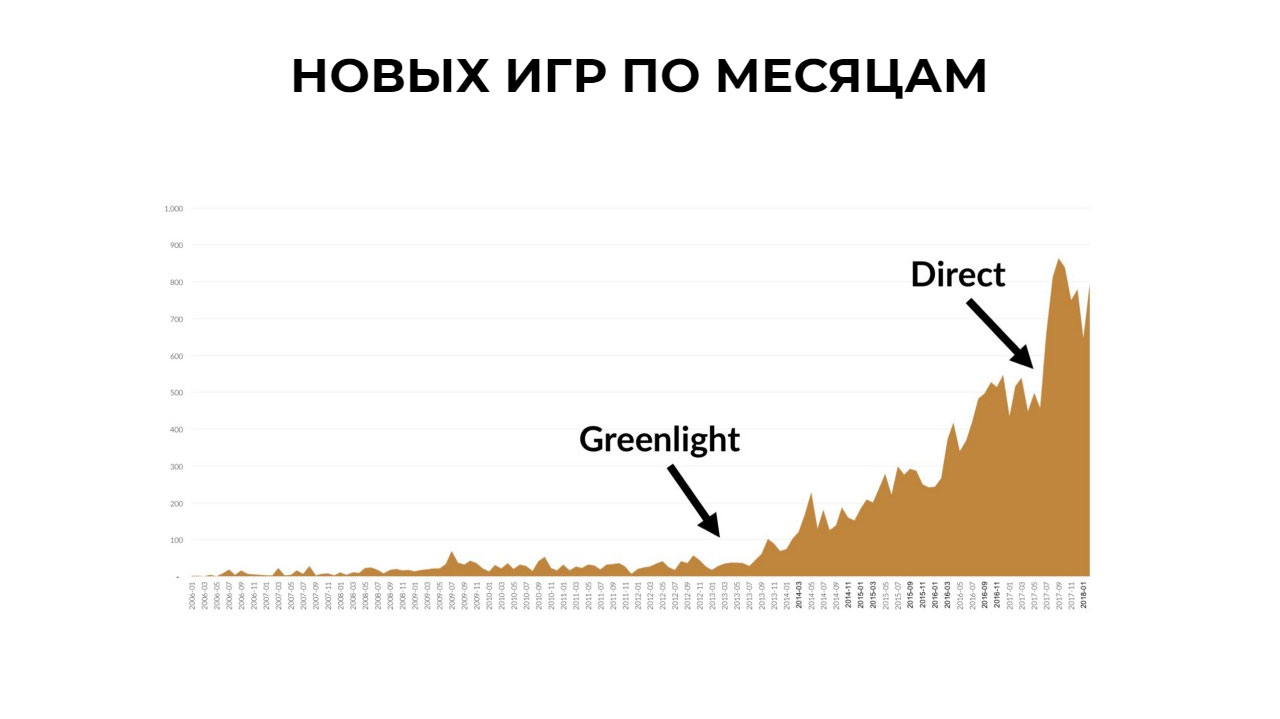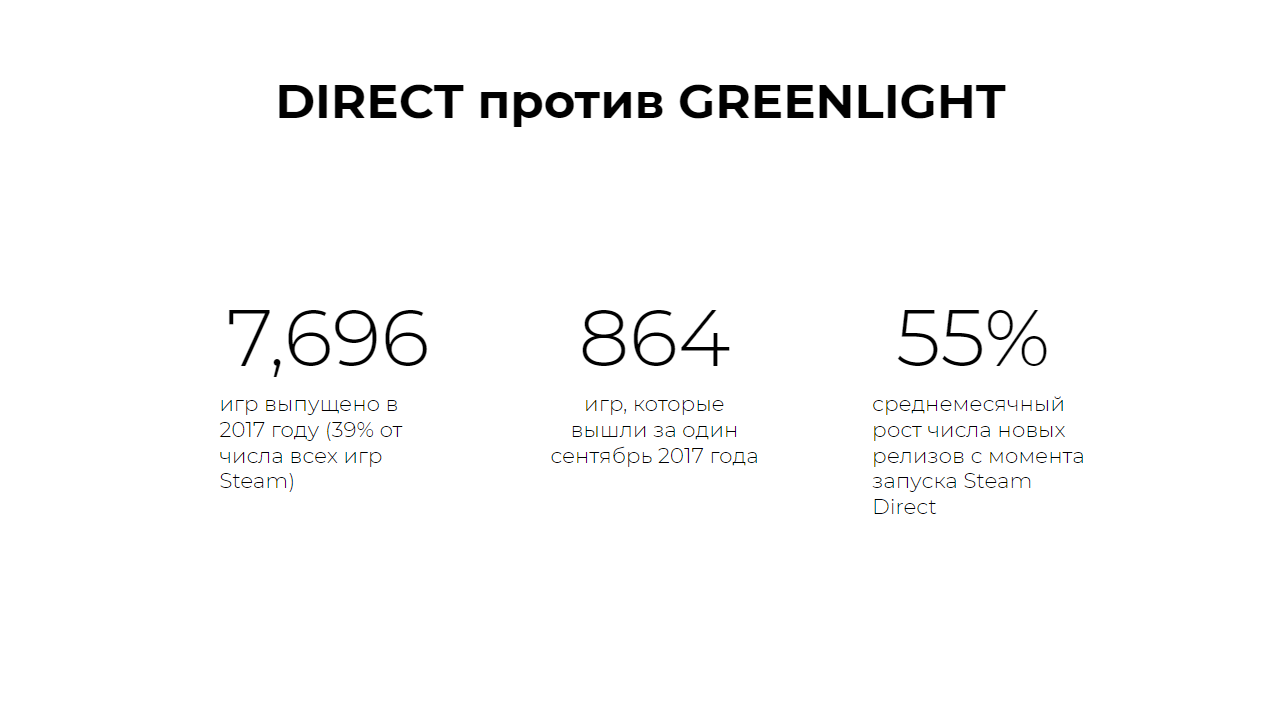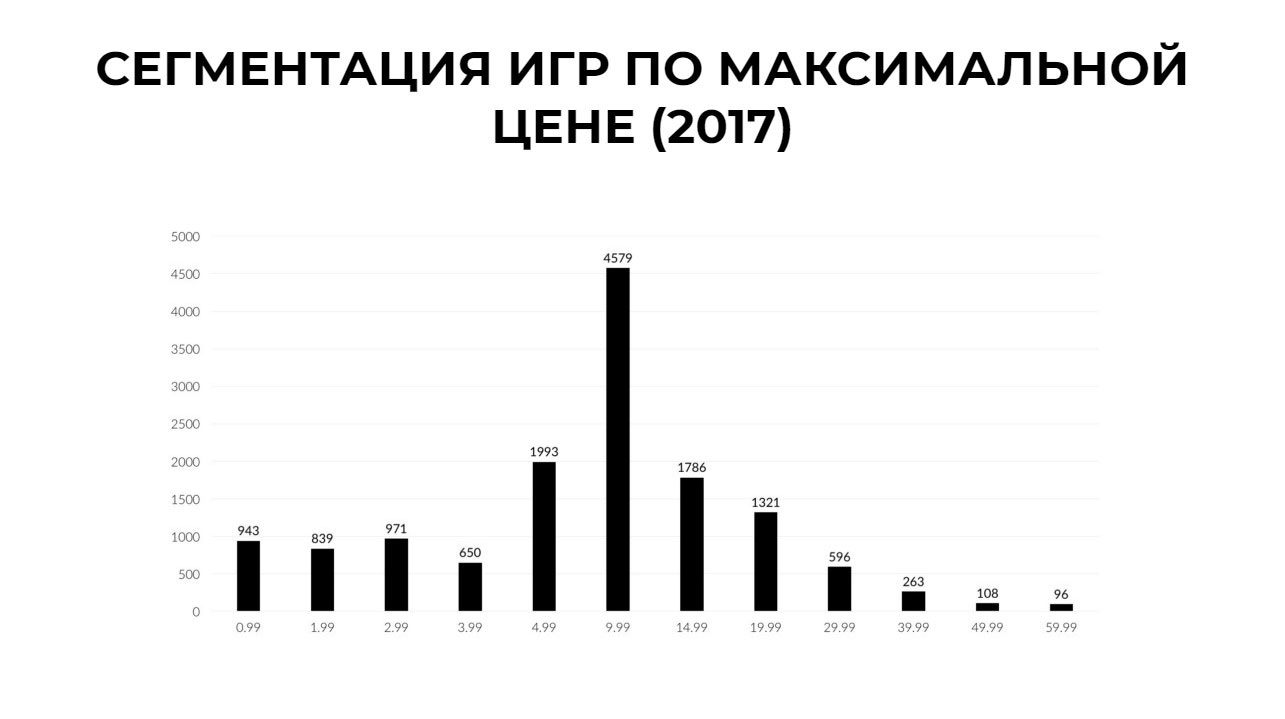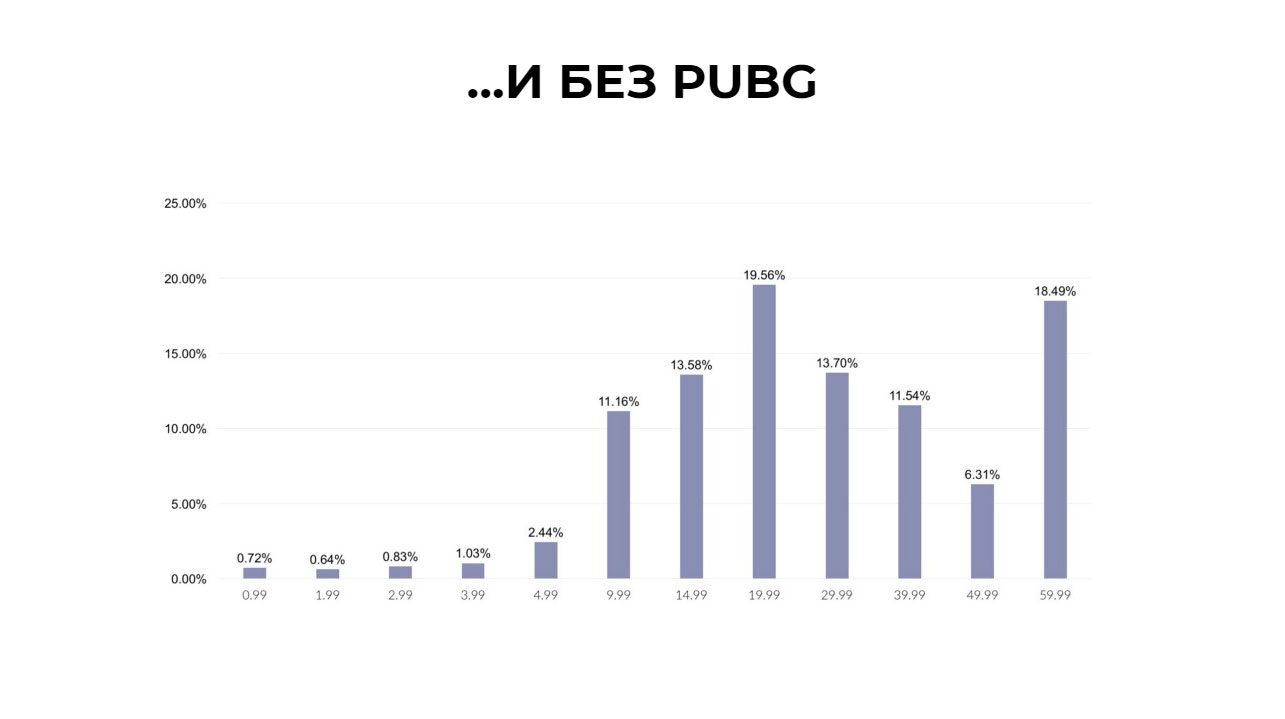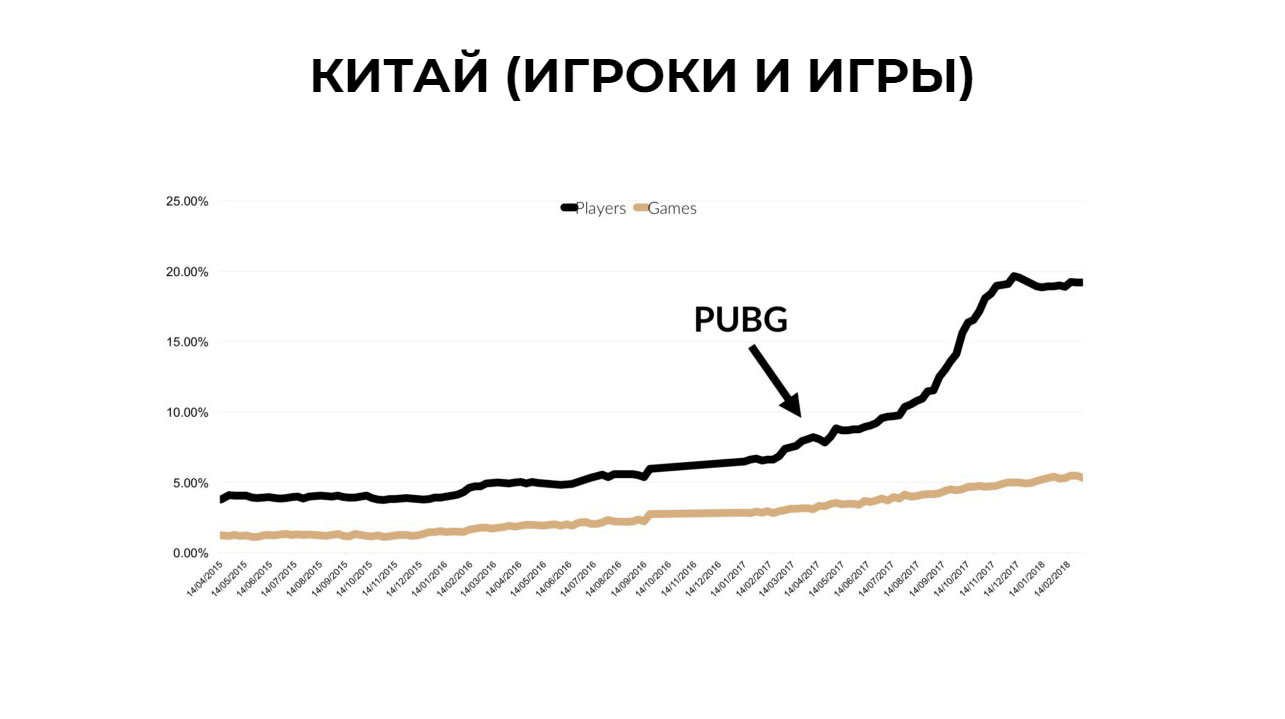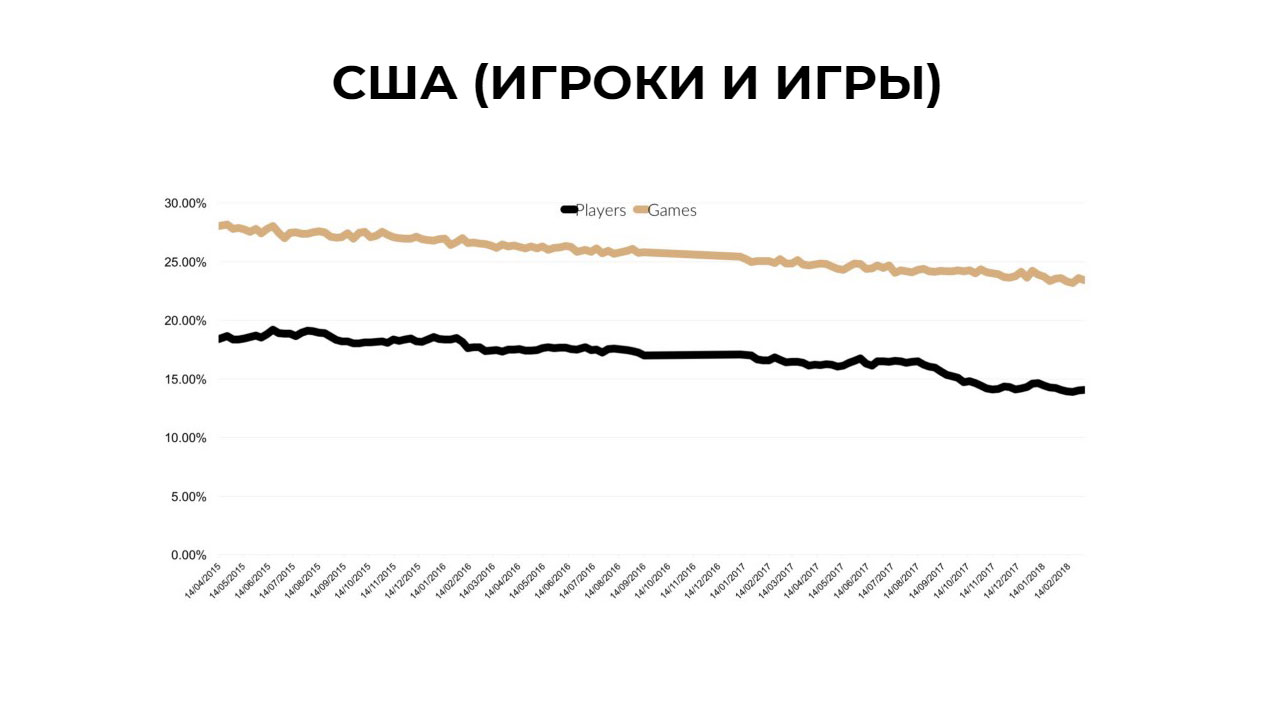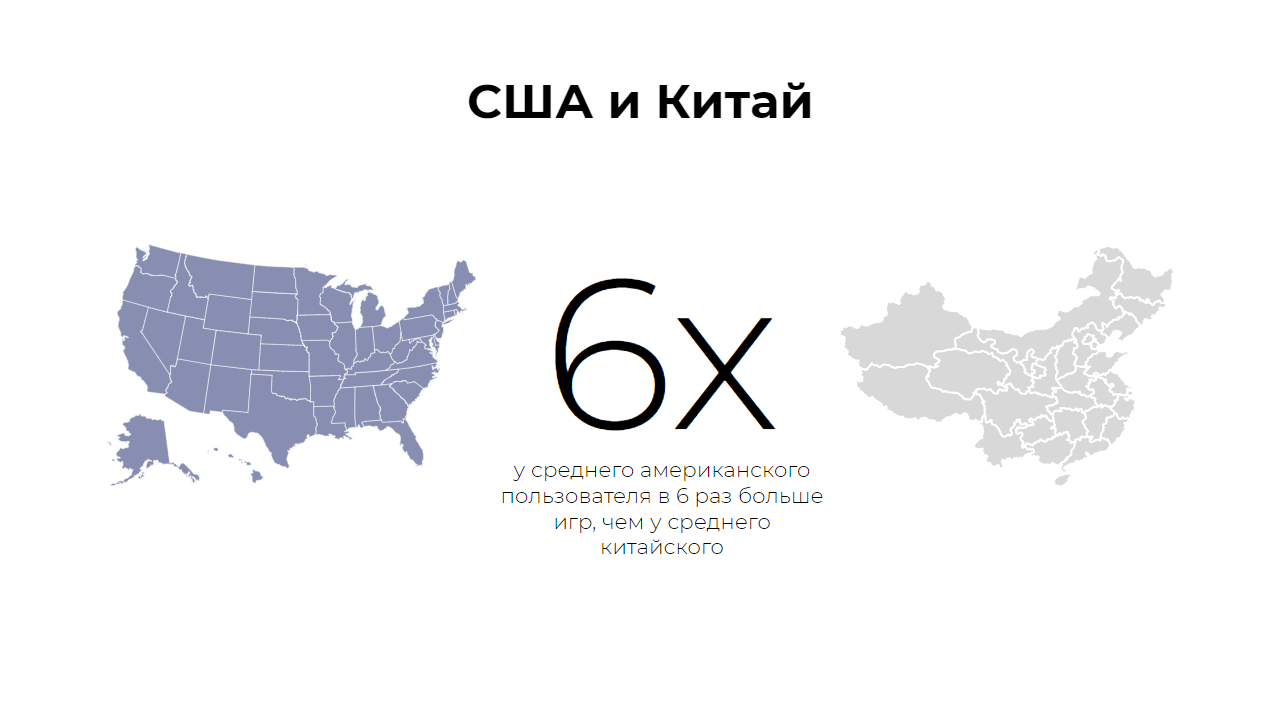How Steam Direct, PUBG and the growth of China affected the largest PC gaming market in 2017, – Sergey Galenkin, director of publishing strategy at Epic Games and author of the Steam Spy service, told in his blog on Medium. We have translated the material into Russian.
Sergey Galenkin, Director of Publishing Strategy at Epic Games
The current article is based on a report I read at GDC 2018. The data was collected for February 2018 and may already be a little outdated by now.
Must-read information
Steam Spy only tracks owners and players, not sales. Also, Steam Spy does not track DLC and MTX.
It is impossible to separate from each other the real sales on Steam, the versions whose keys were purchased on other sites, and those copies that were distributed for free. For the purposes of this material, we measure the control metrics of Steam, and not sales going directly through the store.
Steam Spy uses a confidence interval of 98%, which is very inaccurate when it comes to unpopular games, especially those with less than 30 thousand users.
The geography of Steam Spy is based on the data left by the users themselves. Only the players involved fill in the “Country” column in their profiles, so geo-data will certainly be skewed in their direction.
Steam Spy only tracks how users are playing, and not sitting on Steam or exchanging cards.
Steam Spy is very inaccurate as a method of tracking refunds. I have a small sample of data on refands from a dozen developers, but I’m not confident enough in it to include it in the material.
To estimate the number of users, the site pulls up a sample of data in 3 days. For this article, I used a sample for 10 days, so it is more accurate than on the site.
Steam Spy uses only public profiles to collect and evaluate data. 99.9% of Steam profiles are public.
Steam Spy constantly slows down for at least 4 days. So it is completely inaccurate for evaluating the results of recently released titles.
Market
2017 was the most successful year for Valve in its history. Any indicator that you can imagine has grown: the total number of games sold, audience, total revenue, and so on.
Add freeplay titles and micropayments to this figure and you will see a total figure that is significantly more than $5 billion. Of course, not all of this money went through Valve, a solid part of the sales came from third-party sites and even retail. However, the size of the market controlled by just one private company is still amazing.
By the end of 2017, Steam had 291 million users who had played at least one game at least once. 22% of them appeared in 2017, so if you were worried that Steam only attracts an age-old hardcore audience, then this is not the case. We don’t know the distribution of the audience by age, but Steam adds more and more new users from year to year.
Over the past two weeks, a total of 57 million people have played different games on Steam. Steam is smaller than some projects in terms of an active audience (like Minecraft or League of Legends), but it’s still huge.
The main and only emotion that causes retention on Steam is shock. There is no other game that can demonstrate a similar level of retention for a whole year. But this, of course, is only because Steam is a platform indifferent to hardware, which should be compared with Amazon or eBay, and not ordinary games or even gaming platforms.
The slight drop in Steam retention in recent years can be explained by the large number of recently joined users.
New users buy fewer games than old ones. Moreover, most of them are from developing countries, like China or the Philippines. And even if 1 as the median value representing the number of games from Steam users looks low, it should be noted: if users hold on and continue to use Steam, they are more likely to buy more games.
15 as the current median number of games for users who joined Steam in 2003 looks like a high value, but it’s only one game per year. Nothing extraordinary or even surprising.
Games
Lightning: There are a lot of games on Steam. But you know about it, right?
Steam sales are heavily skewed to the top of only 100 games (0.5% of all), which accounts for 50% of total revenue. If you add micropayments and freeplay titles, then, most likely, the bias will be even stronger.
The top 20 is not surprising. PUBG, as the main heavyweight, takes home $600 million (let me remind you, excluding micropayments). It’s also nice to see an armful of indie titles: Divinity: Original Sin 2, ARK, Rocket League and the fan-adored Cuphead.
If you just look at the top 20 games, the situation hasn’t changed much. The game still needs to earn $22 million in order to get into the Top 20. So why such hysteria about the Indian apocalypse?
Because while the top games are safe, the situation with the rest is not so joyful.
When I wrote my first article about Steam three years ago, the median was 32 thousand owners.
The situation with prices is also more and more unhealthy and reminds me of what was happening with the App Store before iOS 11.
The race to the $0 price tag has begun.
This can partly be explained by the huge number of new games released. That is, the calculation of medians and averages has lost its meaning. So I started checking out the top 500, top 1000 and top 2000 games on Steam instead.
In all these ranges, there is a slight annual drop, but it is really insignificant — somewhere from 3% to 7%. This can be attributed both to those players who buy PUBG, and to any new small titles.
Despite the fact that Steam has had the most successful year of its existence, the number of new users coming to the platform and buying games cannot keep up with the number of new projects coming out. In the graph above, you can see the total time that Steam users spend playing indie projects. It grows with every Steam sale, but not so significantly.
The reason is that Steam Direct has brought a lot of new titles to the platform. However, in terms of destructiveness, he did not stand next to Steam Greenlight.
But let’s go back to prices. I have already mentioned that the average prices for games on Steam are falling. The situation is seriously aggravated by regular sales, which have accustomed users to a wish list and the expectation of a discount instead of an instant purchase.
If you look at the segmentation graph of games at the maximum price, you will see a normal distribution around the value of $9.99, the so-called tasty morsel that many indies love so much.
But the situation looks quite different if you look at the distribution of total revenue between games of different price categories (even taking into account all sales and discounts).
We see the previous normal distribution, but this time around the value of $19.99 and a huge surge regarding full-price games.
Surprise: Cheap games don’t make a lot of money. People still mostly buy quite expensive and high-quality games.
Geography
In February of this year, the “Computer Configuration Survey” from Steam reported that 64% of platform users have simplified Chinese as the default language on their computer. This leads many to believe that China is conquering Steam.
And this despite the fact that Steam is officially unavailable in China. Valve is allowed to operate only in Hong Kong. Of course, mainland Chinese players ignore this restriction and still play on Steam.
If you look at the audience really playing something, the numbers will be different. Yes, there is a surge in the number of players from China, but not in the number of games they buy.

Agree, there is a big difference between 19.5% and 64%, right? It’s even bigger if you pay attention to the number of games they have: 64% vs. 5.4%.
The real situation is wild and in a sense funny. With the growing popularity of PUBG in China, many local cybercafes began to install Steam on their machines so that their customers could play PUBG.
Most of these cybercafes put only Steam itself, but not the game. Hence the discrepancy between the number of cars and players.
But some cybercafes also buy PUBG. The average fee per hour of the game is only $ 3 and the presence of the most popular new title helps them attract customers.
The opportunity to play on someone else’s account without being banned for fraud has led to an increase in the number of Chinese PUBG cheaters.
That’s just he’s not so scary for the owners of the cafe. Even if the car is banned, it costs $15 to unban. This can be called a minor business cost.
And now, for comparison, let’s take the USA.
The share of American users is gradually falling, but not because Americans play less. Steam has just reached saturation point in most Western countries.

Users from the USA buy significantly more than people from China. Again, this is expected, given the difference in GDP per capita.
In general, you should not forget about China as a market for your game, but you should keep in mind: on Steam, China is still smaller than the United States.
But they certainly play PUBG a lot.
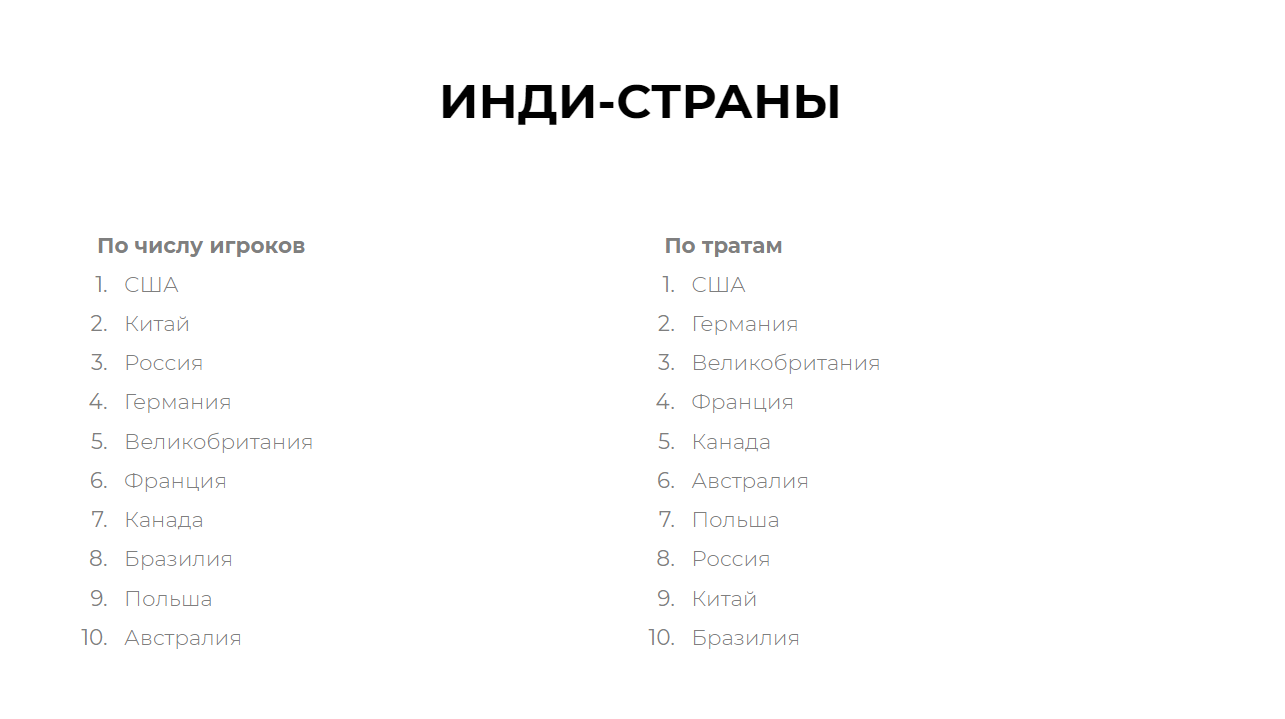
Speaking of markets, China and Russia are two huge countries where people buy indie games. But there is a nuance. Due to the fact that they buy less on average, and also use regional price tags, it makes these markets less profitable.
For this reason, the USA and large countries of Western Europe remain the main markets for indie on Steam.
Conclusions
2017 was the best year for Valve: more games, more sales, more players.
However, there was nowhere near the required number of players to buy all the new titles.
The main Steam sales came from top games, but it's always been that way. It's just that this time so many projects were added to the very tail that it affected the average values.
And this is made by Steam similar to most entertainment markets (think about it, because this is also the case in the market of movies, music and books).
Games with high price tags make more money, especially for AAA projects at full cost.
It’s necessary!
There are a lot of Steam users in China, but it doesn’t look like they’re buying anything other than PUBG.
China is the largest gaming market in the world, but so far this is not true for Steam.
Steam Direct has led to a significant increase in new titles, but its impact is not so great when compared with the consequences of launching Greenlight.
Steam Greenlight has launched a flywheel and although Direct has removed some barriers, but even if Greenlight still existed, we would have seen more new games last year than ever before.
Do you want to know more?
If you want to learn more about Steam games and their current status, go to SteamSpy and follow me on Twitter.
You can also support me on Patreon and then you will be the first to get access to cool SteamSpy insights and features.
Source: Sergey Galenkin’s Blog


